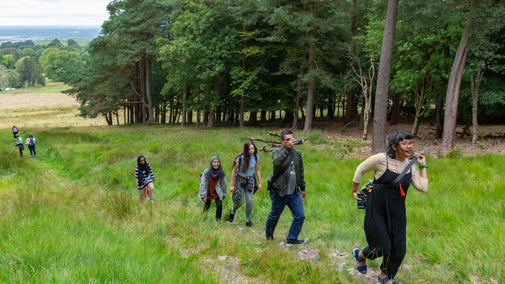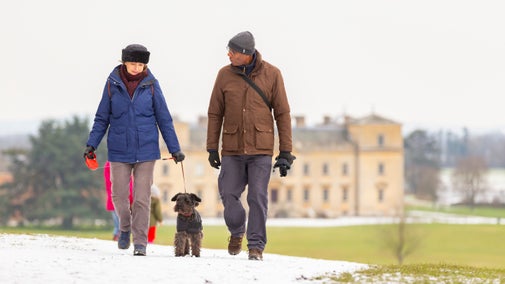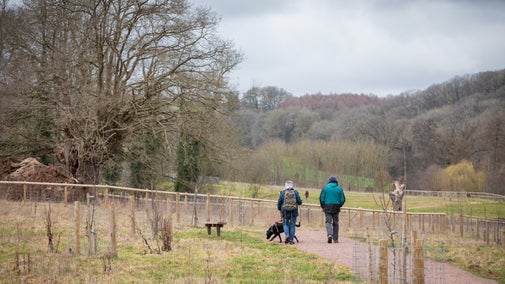Woodland walk green trail at Brockhampton
Worcestershire & Herefordshire
Explore the natural green space on a trail through the woodland with the family. The woodland was once part of the Leggett-inspired parkland. Some of the large older specimen trees were planted in the late 1700s as part of this re-design. Why not see how many native trees you can spot during your walk? Just remember to pop on your wellies, as the paths are very muddy at this time of year.
Near to
BrockhamptonStart point
The car park at Lower BrockhamptonTrail information
Difficulty
Full trail
DistanceMiles: 2 (km: 3.2)More near here
Herefordshire views red trail at Brockhampton
Explore the estate on a short circular walk taking in the church and Park Pond. Enjoy sweeping views across the county and beyond, to Bringsty Common, the Clee Hills, Cotswolds and the Malvern Hills.

Orchard walk blue trail at Brockhampton
Explore the accessible paths through the young and old orchards with something of interest in every season. This 1½-mile return walk is a treat for the senses whatever time of year you visit.

Get in touch
Brockhampton Estate, Bringsty, near Bromyard, Herefordshire, WR6 5TB
Our partners

We’ve partnered with Cotswold Outdoor to help everyone make the most of their time outdoors in the places we care for.
You might also be interested in
Walking
Explore some of the finest landscapes in our care on coastal paths, accessible trails, woodland walks and everything in between. Find the best places to walk near you.

Walking in Worcestershire and Herefordshire
From a short lakeside stroll to a lengthier rural ramble, there are walks for everyone in Worcestershire and Herefordshire. Discover our pick of the best.

Cotswold Outdoor: our exclusive walking partner
Learn about the National Trust’s ongoing partnership with Cotswold Outdoor. Find out how they help us care for precious places and the exclusive discount available for National Trust supporters.

Staying safe at National Trust places
The special places in National Trust care sometimes come with a few risks for visitors, be it coastline or countryside. Find out how to keep safe throughout your visits.

Follow the Countryside Code
Help to look after National Trust places by observing a few simple guidelines during your visit and following the Countryside Code.

Exploring the estate at Brockhampton
Explore the wider estate and parkland and look for the flora and fauna you can spot on a seasonal walk over this 1,700-acre estate.

Eating and Shopping at Brockhampton
Find out the places you can rest and refuel or treat yourself to a pre-loved book to take home at Brockhampton. From classic favourites in the café to pre-loved stories in the second-hand bookshop, every penny spent in the café or shop helps us to look after Brockhampton for future generations.

Visiting Brockhampton Estate with your dog
The estate at Brockhampton is dog-friendly, with miles of woods and parkland to explore with your four-legged friends. Here’s everything you need to know about bringing your dog.


